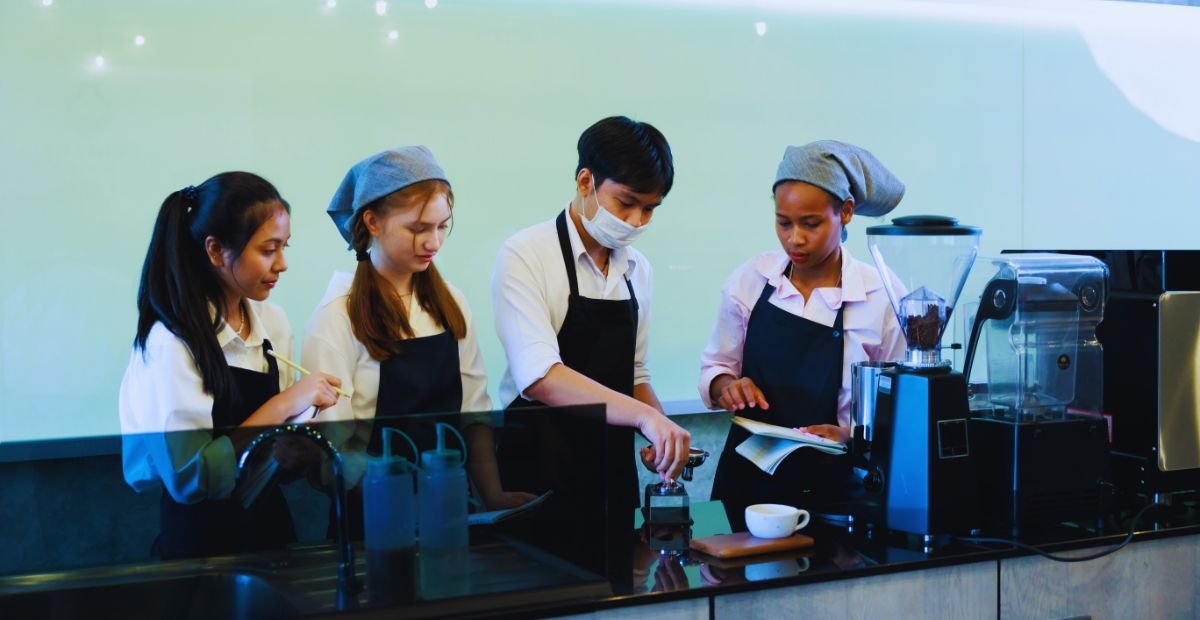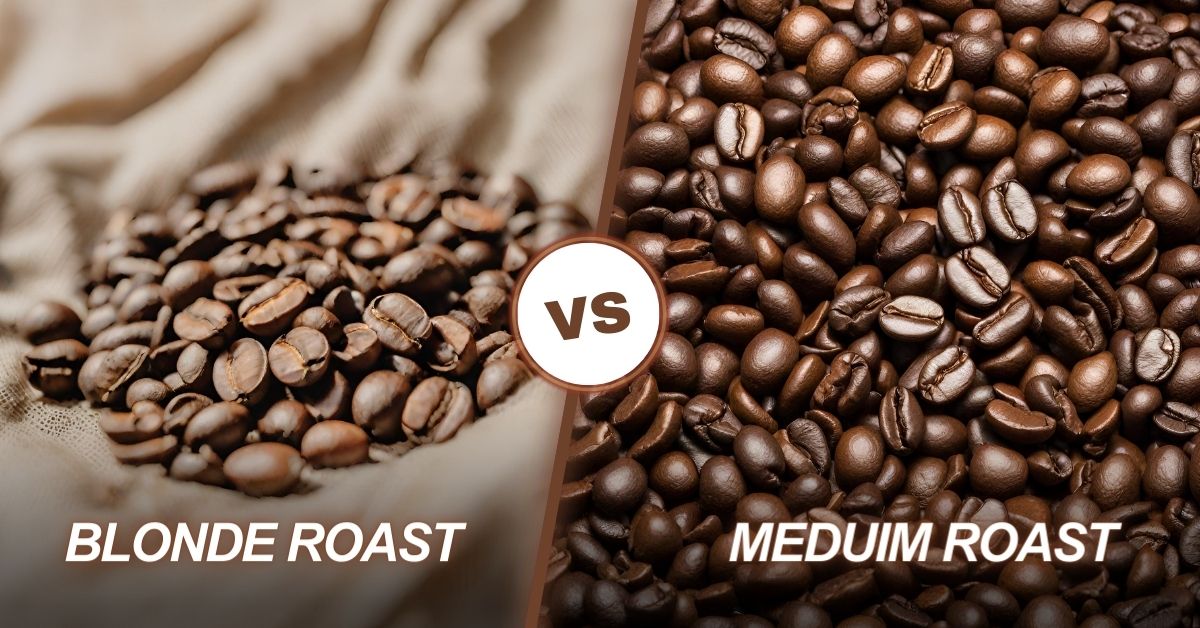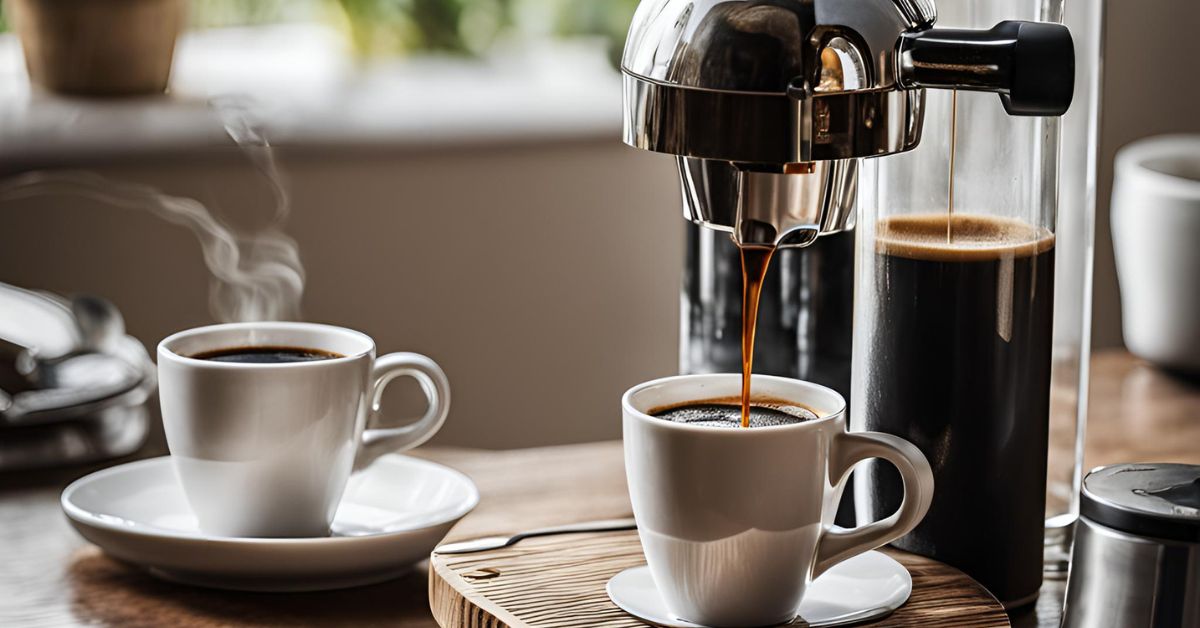Do Asians Prefer Tea or Coffee? The Historical Tapestry

In the diverse tapestry of Asian cultures, where traditions and tastes intermingle harmoniously, a significant question often emerges: Do Asians prefer tea or coffee? This delightful conundrum is not merely a matter of taste; it’s a reflection of history, culture, and individual inclinations.
Tea and coffee are two of the most popular beverages in the world, each with its own rich cultural history and tradition. This article aims to explore the tea and coffee cultures in Asia and how they are changing.
In this article, we will explore the changing tea-drinking culture in China, the enduring allure of tea, and the impact of Generation Z’s preferences and the coffee culture trend.
Tea culture
Tea, a beverage known for its soothing aroma and diverse flavors, holds a special place in the hearts of Asians. The love affair with tea spans centuries, weaving its way through the fabric of Asian culture.
The Historical Tapestry
The history of Asian tea culture is extensive, and each area has its own distinctive traditions and rituals. Let’s take a closer look at some of the prominent tea-drinking cultures across Asia:
- China: The Cradle of Tea CultureWith a history spanning more than 5,000 years, China is frequently cited as the origin of tea. The Chinese have cultivated a profound relationship with tea, incorporating it into their daily lives through elaborate ceremonies, such as the Gongfu tea ceremony. Chinese tea culture emphasizes the connection between tea and philosophy, health, and the appreciation of nature.
- Japan: The Zen of TeaThe tea ceremony, often referred to as Chanoyu or Sado in Japan, is a highly ritualized and spiritual tradition. It places a strong emphasis on peace, harmony, purity, and respect. The foundation of Japanese tea culture is matcha, a powdered green tea known for its bright green hue and contemplative properties.
- India: Chai’s Enduring LegacyIndia’s tea culture centers around the beloved beverage, chai. Aromatic and spiced, chai is a staple in Indian households and street stalls. Chai symbolizes togetherness, and the act of brewing and sharing a cup is a way of fostering connections and conversation.
- South Korea: Simplicity and Elegance South Korea’s tea culture, influenced by both China and Japan, emphasizes simplicity and elegance. Traditional Korean tea ceremonies, known as Darye, focus on the beauty of nature and mindfulness. Korean green teas, such as Jeoncha and Sejak, are known for their delicate tastes.
Cultural Significance
- Ceremonial EleganceTea ceremonies in Asia are not just about drinking tea; they are profound cultural rituals. These ceremonies often involve meticulous preparation, serving, and consumption of tea. The elaborate rituals reflect values such as respect, mindfulness, and connection with nature.
- Social BondingTea is more than just a beverage; it’s a means of fostering social bonds. In many Asian cultures, offering tea to guests is a gesture of hospitality and friendship. It provides an opportunity for people to come together, share stories, and build relationships.
- Health and WellnessAsians have long recognized the health benefits of tea. Green tea is well-known for its antioxidants and possible health advantages. Many Asian cultures incorporate tea into their daily routines as a way to promote well-being.

Modern Adaptations
While traditional tea culture remains deeply ingrained in Asian societies, there has also been a modernization of tea consumption.
Today, you can find a wide variety of teas, from traditional loose-leaf to convenient tea bags, as well as tea-based beverages like bubble tea. The fusion of tradition and modernity has led to a thriving tea industry that caters to a diverse range of tastes and preferences.
Coffee culture
Coffee, the aromatic elixir that awakens the senses and fuels the day, has evolved into more than just a beverage. It has become a cultural phenomenon, with a rich history, diverse flavors, and a global community of enthusiasts.
The Coffee Renaissance
- The Coffee Bean’s Origins Coffee’s journey began in the lush highlands of Ethiopia, where legend has it that a goat herder discovered the energizing properties of coffee cherries. From there, coffee spread to the Arabian Peninsula, where it became an integral part of the culture and eventually found its way to the rest of the world.
- The Coffeehouse RevolutionIn the 17th century, coffeehouses, known as “penny universities” for their role in intellectual discourse, began to emerge in Europe. These establishments became hubs of conversation, innovation, and the exchange of ideas, fostering the Enlightenment and the Age of Reason.
The Essence of Coffee Culture
- The Brews and Blends Coffee culture offers a diverse array of brews and blends, each with its unique flavor profile and preparation method. From the bold and robust espresso shots of Italy to the silky smoothness of a well-crafted latte, coffee accommodates a wide range of preferences.
- The Art of Roasting Roasting is a crucial element of coffee culture, transforming green coffee beans into the aromatic beans we grind and brew. Roasters carefully select beans from around the world and employ a range of roasting techniques to bring out distinctive flavors and aromas.
- Coffee Shops as Gathering Spaces Coffee shops have become more than places to grab a cup of coffee; they are social havens. The cozy ambiance, free Wi-Fi, and comfortable seating make coffee shops ideal for work, study, or simply catching up with friends. They serve as community centers where people from all walks of life come together.
- Global Coffee ChainsInternational coffee chains like Starbucks and Dunkin’ have played a significant role in popularizing coffee culture. Their consistent quality, wide-ranging menus, and global presence have made coffee more accessible and enjoyable to millions.
Cultural Significance
- Social Connection Coffee has a unique ability to bring people together. Coffee shops provide as a neutral space where discussions may flow and connections can be made, whether it’s a business meeting, a first date, or a family gathering.
- Art and Creativity The art of coffee-making, known as latte art, has become a form of creative expression. Baristas worldwide craft intricate designs on the surface of coffee drinks, transforming them into works of art that are both visually pleasing and delicious.
- Health and Well-Being Coffee culture has evolved to cater to health-conscious consumers. Specialty coffee beans, such as single-origin and organic varieties, have gained popularity, and coffee is studied for its potential health benefits, including antioxidants and improved cognitive function.
Will Chinese drink coffee over tea?
The preference for coffee over tea in China is a topic that has gained attention in recent years due to the global popularity of coffee culture.
While coffee consumption has been on the rise in urban areas of China, especially among the younger generations, it’s important to note that the deep-rooted tradition of tea remains a significant and enduring part of Chinese culture.
Here are some key factors to consider:
- Urbanization and Modernization: Coffee culture has found a niche in China’s rapidly urbanizing cities, where a fast-paced lifestyle and Western influences have contributed to the growth of coffee shops and the popularity of coffee consumption. Younger urban dwellers, in particular, are more likely to embrace coffee as a symbol of modernity and global connectivity.
- Cultural Significance of Tea: Tea has an ancient and profound cultural significance in China. It is often associated with concepts like hospitality, harmony, and respect. Traditional Chinese tea ceremonies, such as Gongfu Cha, are intricate and beautiful rituals that celebrate the art of tea preparation and enjoyment.
- Health Benefits: Many Chinese people are aware of the potential health benefits of tea, particularly green tea, which is celebrated for its antioxidants and potential positive effects on well-being. This awareness of tea’s health benefits may influence consumption patterns.
- Coexistence of Coffee and Tea: Rather than an either-or scenario, coffee and tea often coexist in Chinese culture. People may enjoy both beverages, choosing coffee for its energizing qualities and tea for its soothing and healthful properties.
- Regional Variation: China is a vast and diverse country with regional variations in beverage preferences. While coffee might be more popular in some urban areas, rural regions may still primarily favor tea.
Changing tea-drinking culture
The love affair between Chinese people and tea has spanned centuries, but as China undergoes rapid social and cultural transformations, its tea-drinking culture is experiencing shifts and adaptations. Meanwhile, the rise of coffee culture has also left its mark on the nation.
Why Do Chinese People Love Tea So Much?
- Deep Roots in Tradition: Tea has been an integral part of Chinese culture for over 5,000 years. It is deeply intertwined with customs, rituals, and philosophies, symbolizing hospitality, harmony, and respect. The time-honored traditions surrounding tea continue to hold great significance for Chinese people.
- Health Benefits: Chinese people are well aware of the health benefits of tea, particularly green tea. Its antioxidant properties and potential positive effects on well-being have contributed to its enduring popularity. Many see tea as a natural and healthful beverage choice.
- Variety and Complexity: China boasts a wide variety of teas, each with its unique flavors and characteristics. From the delicate sweetness of white tea to the boldness of pu-erh, tea offers an array of tastes to explore, appealing to diverse palates.

How Gen Z is Changing China’s Tea-Drinking Culture
- Embracing Modernity: Generation Z in China is known for embracing modernity and global trends. This generation is more open to trying new things, including different beverage choices. As a result, some members of Gen Z are showing an increased interest in coffee and other non-traditional drinks.
- Influence of Western Culture: The exposure to Western culture, particularly through the internet and social media, has introduced Gen Z to coffee culture. Coffee shops are trendy hangout spots for young people, offering a different atmosphere compared to traditional teahouses.
- Demand for Convenience: Gen Z’s fast-paced lifestyle and focus on convenience have led to an appreciation for on-the-go beverages like coffee, which can be easily grabbed from cafes or ordered through mobile apps.
The Rise of China’s Coffee Culture
- Urbanization and Globalization: Coffee culture has seen rapid growth in urban areas of China, mirroring the country’s urbanization and globalization. Coffee shops, including international chains like Starbucks, have become ubiquitous in cities.
- Youth Appeal: Coffee culture resonates with younger generations and urban professionals. Coffee is often associated with energy, productivity, and a cosmopolitan lifestyle, making it attractive to those who value these attributes.
How is Tea Culture Changing?
- Innovation and Fusion: To adapt to changing preferences, traditional teahouses, and tea companies in China are innovating by introducing new tea blends, flavors, and even tea-infused beverages. Some are incorporating modern aesthetics and marketing strategies to attract younger consumers.
- Tea and Wellness: Tea’s association with health and wellness continues to be a driving force. Chinese consumers are increasingly seeking teas that offer specific health benefits, such as weight management or relaxation.
- Tea Tourism: The concept of “tea tourism” is on the rise, where people visit tea plantations to learn about the tea-making process and experience tea culture firsthand. This trend is fostering a deeper appreciation for tea.
Frequently Asked Questions about Asians prefer tea or coffee
Do Koreans prefer tea or coffee?
Koreans have a historical preference for tea, particularly green tea, but the popularity of coffee has been on the rise in recent years, especially among the younger generations. So, while tea holds a significant place in Korean culture, coffee has also gained substantial popularity.
Do the Japanese prefer tea or coffee?
Japanese culture has a strong tradition of tea, with matcha being a prominent choice. However, coffee has made significant inroads in Japan, and it is popular among various age groups. So, Japanese preferences for tea or coffee can vary depending on individual tastes and occasions.
Is tea popular in Asia?
Yes, tea is immensely popular in Asia. It holds cultural, social, and historical significance in many Asian countries, including China, Japan, India, and various others. Tea is often associated with hospitality, tradition, and health benefits, making it a beloved beverage throughout the continent.
Why do Asians drink a lot of tea?
Asians drink a lot of tea due to a combination of cultural, historical, and health-related factors. Tea has been an integral part of Asian culture for centuries, and it symbolizes harmony, hospitality, and connection to nature. Additionally, the potential health benefits of tea, particularly in promoting well-being, play a significant role in its popularity.
Which country loves tea the most?
China is often regarded as the country that loves tea the most. It has a deeply ingrained tea culture with a wide variety of tea types and elaborate tea ceremonies, making tea an integral part of daily life.
Which three countries drink the most tea?
The three countries that traditionally consume the most tea are:
- China: With its vast population and diverse tea culture, China is the largest consumer of tea in the world.
- India: India is another top tea-consuming nation, known for its strong tea traditions and the production of famous teas like Assam and Darjeeling.
- Turkey: Turkish tea, known as “çay,” is a staple beverage in Turkey, and the country has a strong tea-drinking culture.

Conclusion
In conclusion, the debate over whether Asians prefer tea or coffee is a nuanced and intriguing one. While historical, cultural, and health factors play a substantial role in shaping these preferences, individual taste remains paramount.
The diverse continent of Asia continues to embrace both tea and coffee, creating a rich tapestry of flavors and traditions that reflect the dynamic nature of this fascinating region.
Whether you’re sipping a cup of soothing tea or indulging in a robust coffee, one thing is clear: both beverages have found a cherished place in the hearts of Asians, each offering its own unique charm.




